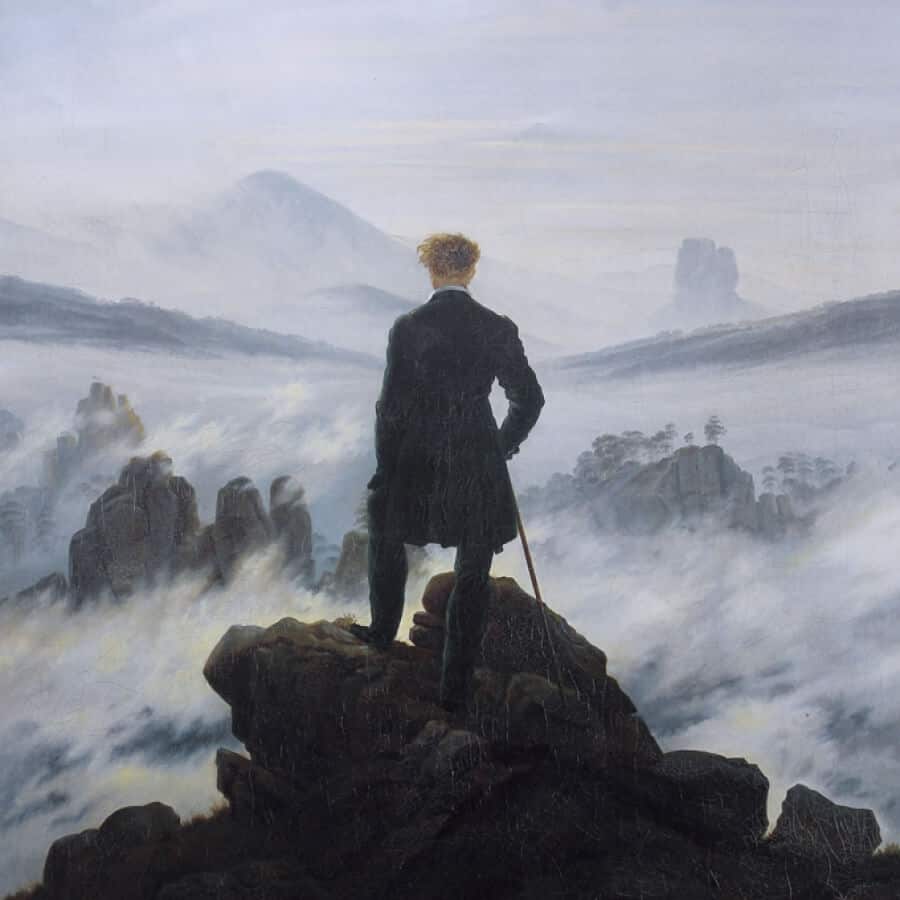This great movement started in the late 18th century and continued into the first half of the 19th. We can say that with it affected not only literature, but also other arts such as music and painting. Created as an opposition to classicism, Romanticism gave birth to the world of human feelings. Everything before that had been essential, now became irrelevant. This provided stimulus for new, fresh ideas. Ancient times and ancient art were no longer seen as perfect examples. A new epoch in human thinking began, an epoch which marked a true rebirth, a new path, which led to a new dimension. It didn’t last too long, but Romanticism left behind much to remember.
People became disappointed in previously accepted social values. Little that surrounded them looked positive. Thus began revolutions not only in art but also in everyday life. Changes were everywhere: nothing was in harmony, and reality as it was or had been no longer seemed to fit. Followers of Romanticism closed themselves in their little worlds, worlds made of sadness and melancholy. This is where they sought refuge to enjoy their loneliness. They became strangers in their own world, removed from the larger world where they no longer belonged. So Romanticism became a kind of revolution against the world in which people were living, and a struggle for a new world and a new vision.
Nature became a place for escape, and that is why the Romantic hero was always presented in some kind of relationship with nature, the world, and himself. Freedom was put in the first place, because life without freedom could not be called life. So in running away from the cruelties of real life, people went into the world of the imagination. Romanticism was mostly about lyrical literature, and what was noticeable in it was an excessive description of feelings.
If we look at the works of the classical period, we will see that they were written according to strictly defined rules, and nature was seen as something that should be tamed. People were seen as somewhat limited creatures. In Romanticism there were deviations from many rules, such as the well-established structure of literary genres. Novels whose main theme was love were written, and drama also followed some of the new trends. Writers, as well as the main characters of Romanticism, believed that they were much better than the world around them and with all their power they tried to change it, but when they realized that they were too good for what surrounded them, and that it was going to be difficult to affect change, then the result was pure disappointment.
Extreme emotional reactions of this type can be found in patients who have bipolar disorder and who are frustrated with reality. Such patients have periods of euphoria followed by periods of depression. These depressive periods can lead to desperation and suicide.
One of the key issues was the fact that negative phases lasted longer than positive ones. Each and every single one of us has gone through some form of anxiety or depression in stressful situations, but many people are living lives that are constant struggles. This is related to moods that last for a longer period of time than fleeting emotions. There is a certain apathy toward existence, and this is related to the ”lack of emotion”. Many psychologists say that this happens in the period between two emotions.
There is a similarity between this illness and cocaine dependence, where euphoria is followed by depression in the withdrawal phase. While many say that mental illness of this kind sends many people to hospitals, it was also an inspiration to some of the world’s greatest painters, writers, poets and philosophers. It spurred greater creative thinking and evoked artists’ expressions.
Poets like Samuel Taylor Coleridge were well-known for their use of drugs and their struggle with depression. This was a form of escapism and also a kind of stimulus to inspiration. One of his famous works “Kubla Khan” speaks about the way true Romantics wrote – spontaneously with the feeling of being possessed. His close friend – and another great writer – William Wordsworth said: “All good poetry is a spontaneous overflow of powerful feelings: it takes its origin from emotion recollected in tranquility”. Lord Byron also spoke about escapism as a form of finding your inner peace.
Many writers during the periods of Sentimentalism and Romanticism experienced tragic destinies. Many of them committed suicide because they could not deal with their depression. The best example was the English poet Thomas Chatterton, who committed suicide at the age of 18. People tend to say that suicide is an act of cowardice which comes as a response to the situation in which the individual is living. There are demons in all of us, and we have to fight them every day. Some battles are more, some are less successful, but we certainly should not condemn someone who has chosen this way to deal with the problem. Timely assistance is very important, but the problem is that people think that in one day everything can change. A person who is struggling with depression is often not understood and even worse, is mocked.
Rarely does anybody want to see a beautiful world behind the struggle, and all of the beauty behind the madness.
Support us!
All your donations will be used to pay the magazine’s journalists and to support the ongoing costs of maintaining the site.
Share this post
Interested in co-operating with us?
We are open to co-operation from writers and businesses alike. You can reach us on our email at [email protected]/[email protected] and we will get back to you as quick as we can.









